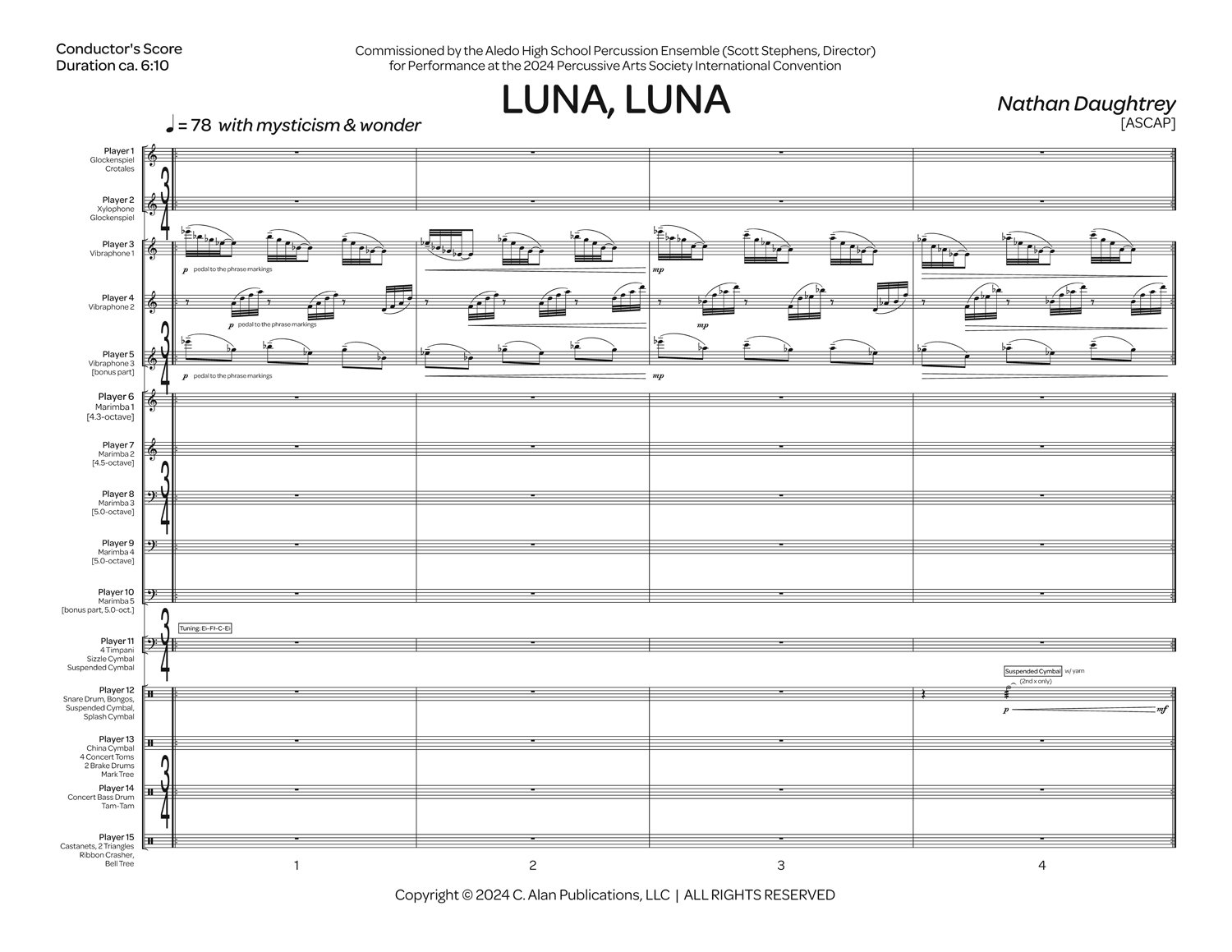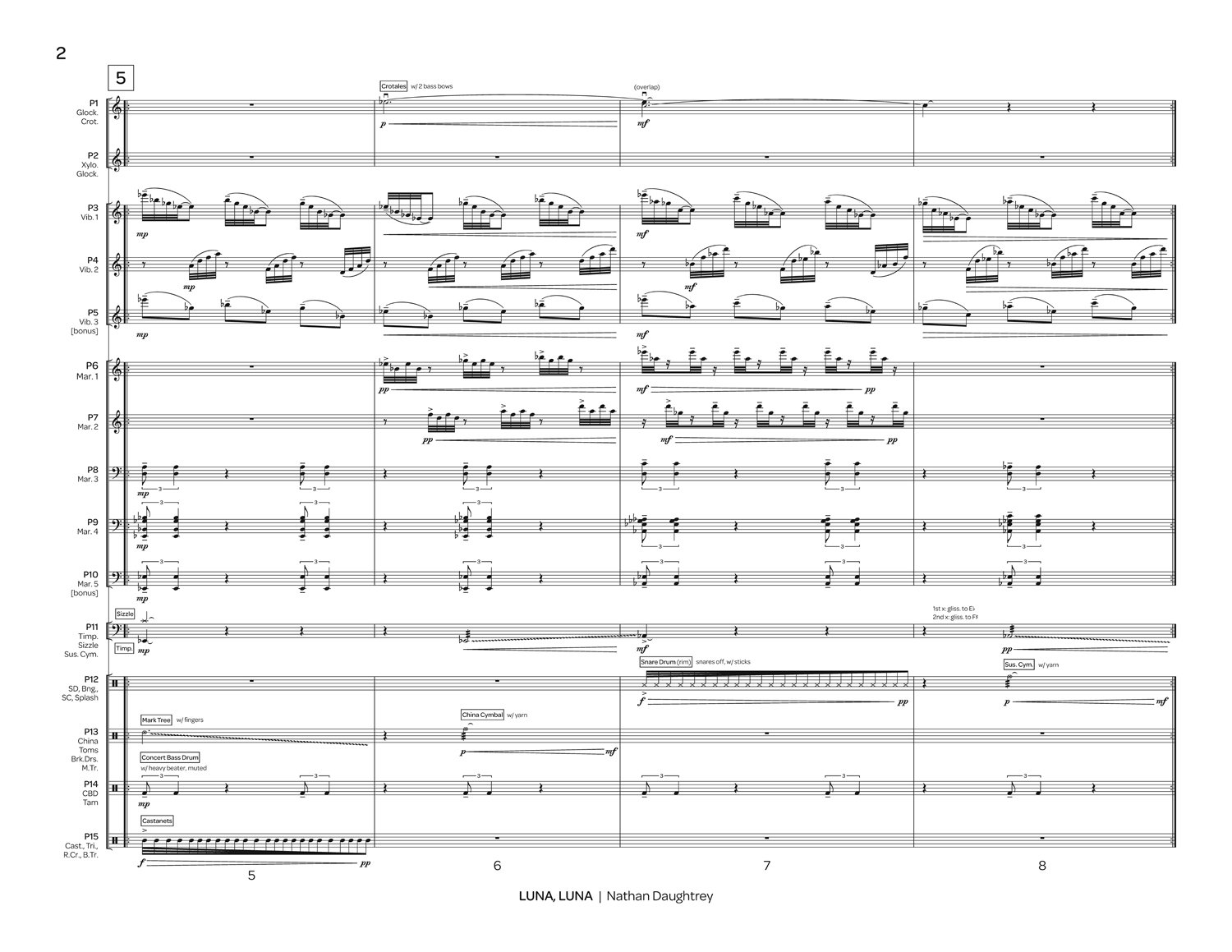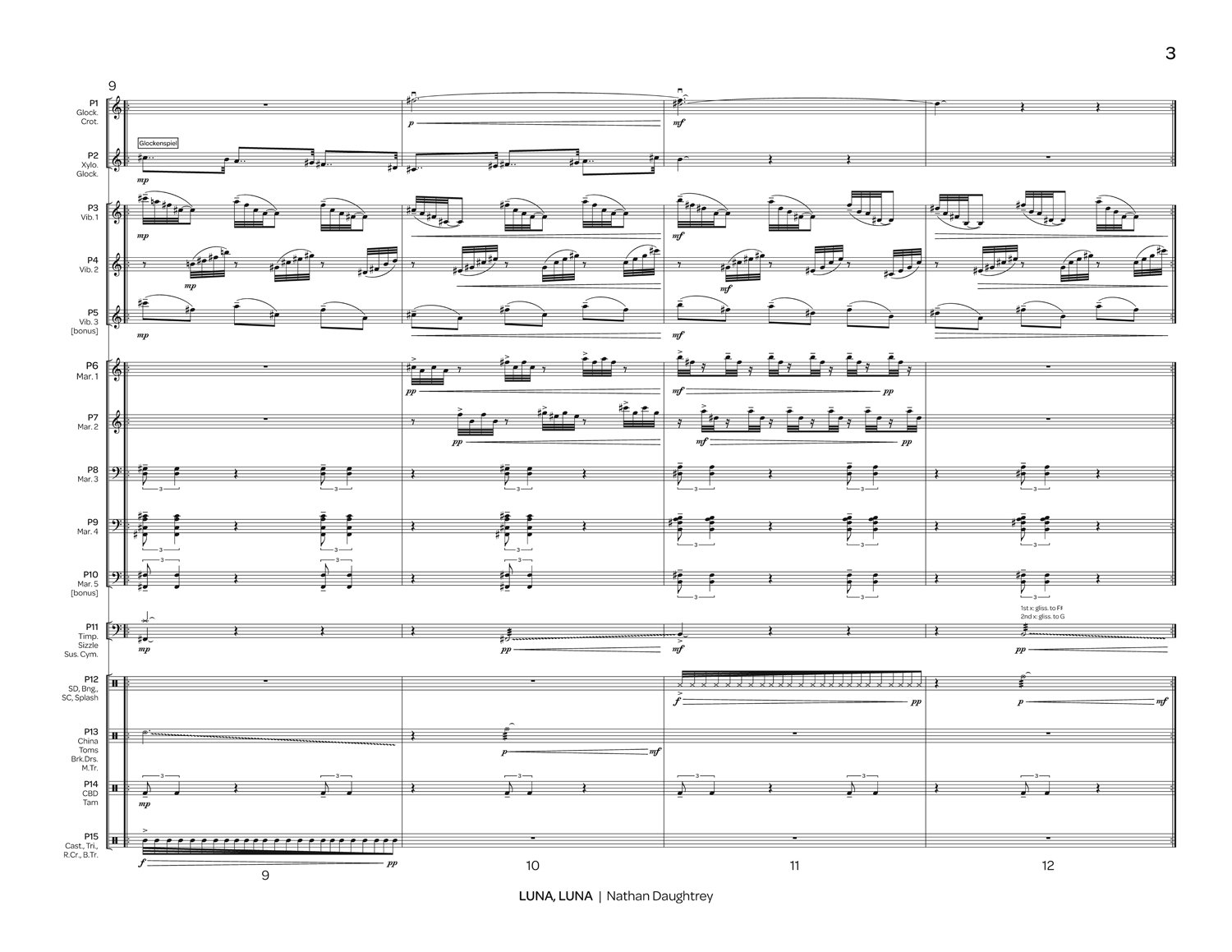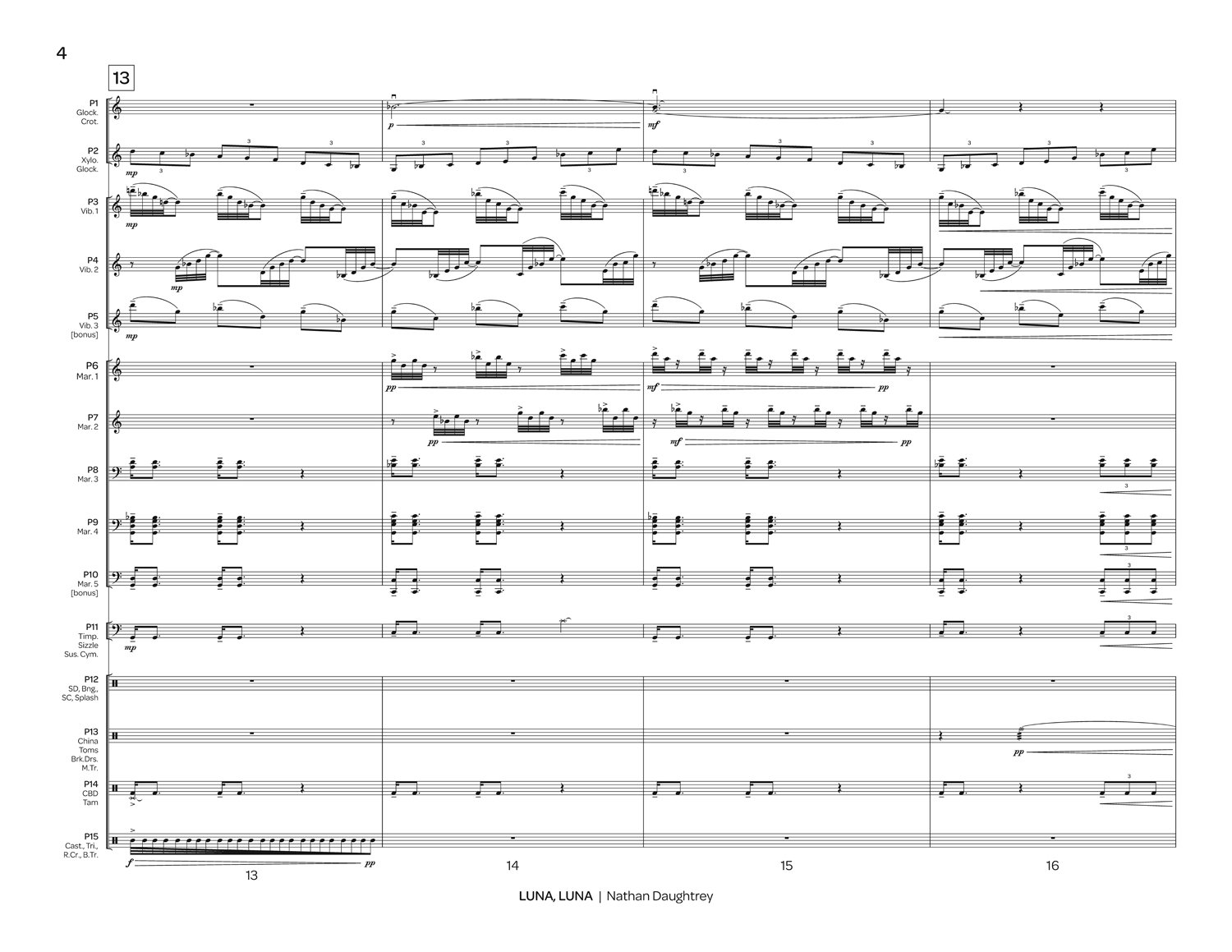 Image 1 of 17
Image 1 of 17

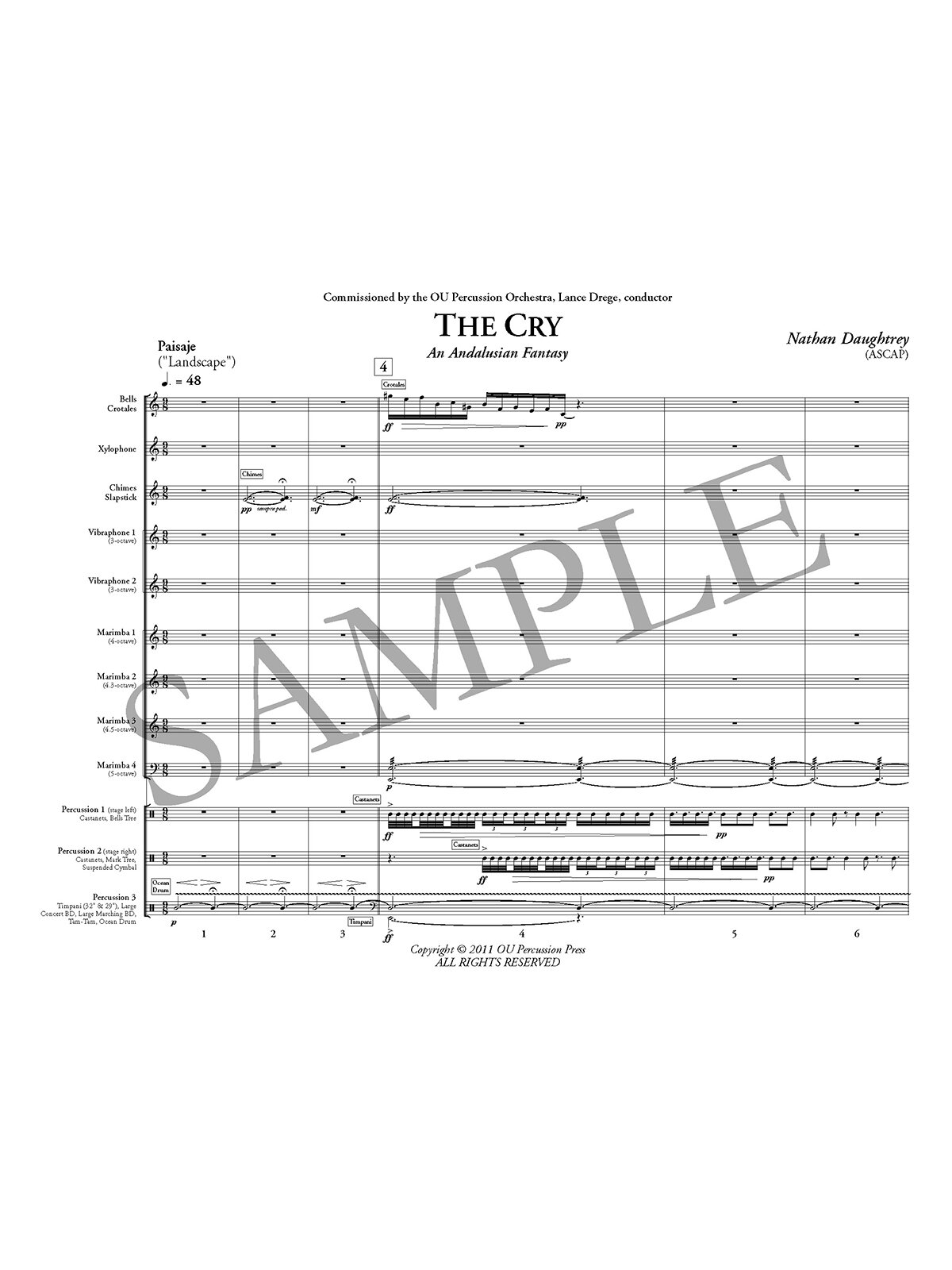 Image 2 of 17
Image 2 of 17

 Image 3 of 17
Image 3 of 17

 Image 4 of 17
Image 4 of 17

 Image 5 of 17
Image 5 of 17

 Image 6 of 17
Image 6 of 17

 Image 7 of 17
Image 7 of 17

 Image 8 of 17
Image 8 of 17

 Image 9 of 17
Image 9 of 17

 Image 10 of 17
Image 10 of 17

 Image 11 of 17
Image 11 of 17

 Image 12 of 17
Image 12 of 17

 Image 13 of 17
Image 13 of 17

 Image 14 of 17
Image 14 of 17

 Image 15 of 17
Image 15 of 17

 Image 16 of 17
Image 16 of 17

 Image 17 of 17
Image 17 of 17


















The Cry
The Cry emulates the passionate melismatic singing and sparse guitar playing found in cante jondo ("deep song") and flamenco music. The virtuosic singing is emulated throughout the ensemble in long flourishes that are full of twists and turns. The antiphonal castanet players help bring in the flamenco elements to the piece, as well as the sounds of flamenco dancers tapping, stomping and clapping in rhythm.
Medium: Percussion Ensemble (12)
Publisher: OU Percussion Press
Composed: 2010
Duration: 11:00 (9:30 with optional cuts)
Difficulty: Grade 5
Commission: OU Percussion Orchestra, Dr. Lance Drege
The Cry emulates the passionate melismatic singing and sparse guitar playing found in cante jondo ("deep song") and flamenco music. The virtuosic singing is emulated throughout the ensemble in long flourishes that are full of twists and turns. The antiphonal castanet players help bring in the flamenco elements to the piece, as well as the sounds of flamenco dancers tapping, stomping and clapping in rhythm.
Medium: Percussion Ensemble (12)
Publisher: OU Percussion Press
Composed: 2010
Duration: 11:00 (9:30 with optional cuts)
Difficulty: Grade 5
Commission: OU Percussion Orchestra, Dr. Lance Drege
The Cry emulates the passionate melismatic singing and sparse guitar playing found in cante jondo ("deep song") and flamenco music. The virtuosic singing is emulated throughout the ensemble in long flourishes that are full of twists and turns. The antiphonal castanet players help bring in the flamenco elements to the piece, as well as the sounds of flamenco dancers tapping, stomping and clapping in rhythm.
Medium: Percussion Ensemble (12)
Publisher: OU Percussion Press
Composed: 2010
Duration: 11:00 (9:30 with optional cuts)
Difficulty: Grade 5
Commission: OU Percussion Orchestra, Dr. Lance Drege
Instrumentation
Bells & Crotales
Xylophone
Chimes & Slapstick
Vibraphone 1
Vibraphone 2
Marimba 1 (4-octave)
Marimba 2 (4.3-octave)
Marimba 3 (4.5-octave)
Marimba 4 (5-octave)
Percussion 1 (stage left: castanets, bell tree)
Percussion 2 (stage right: castanets, mark tree, suspended cymbal)
Percussion 3 (2 timpani, large concert bass drum, large marching bass drum or kick bass, tam-tam, ocean drum)
Program Notes
Based on a colorful poem by Federico García Lorca with vivid imagery and a wonderful arc, The Cry was commissioned and premiered by the University of Oklahoma Percussion Orchestra, conducted by Dr. Lance Drege. The work divides into 5 primary sections: Paisaje (“Landscape”) La Guitarra (“The Guitar”) El Grito (“The Cry”) Un Silencio Ondulado (“A Rolling Silence”) Tierra de Luz, Cielo de Tierra (“Earth of Light, Sky of Earth”) Federico García Lorca was extremely interested in the Spanish gypsy music known as Cante Jondo (or "Deep Song"), which is the purist and most natural precursor to Flamenco music. It is filled with passionate melismatic singing and sparse guitar playing. Great care has been taken to differentiate between the more popular Flamenco form and Cante Jondo, always emphasizing that the latter is the purer and more serious of the two forms. It is this struggle that is at the heart of "The Cry." The virtuosic singing is emulated throughout the ensemble in long flourishes that are full of twists and turns. The antiphonal castanet players help bring in the flamenco elements to the piece, as well as the sounds of flamenco dancers tapping, stomping and clapping in rhythm. Most important in composing this piece was that the beautiful words of García Lorca and the form of his poem are represented.






